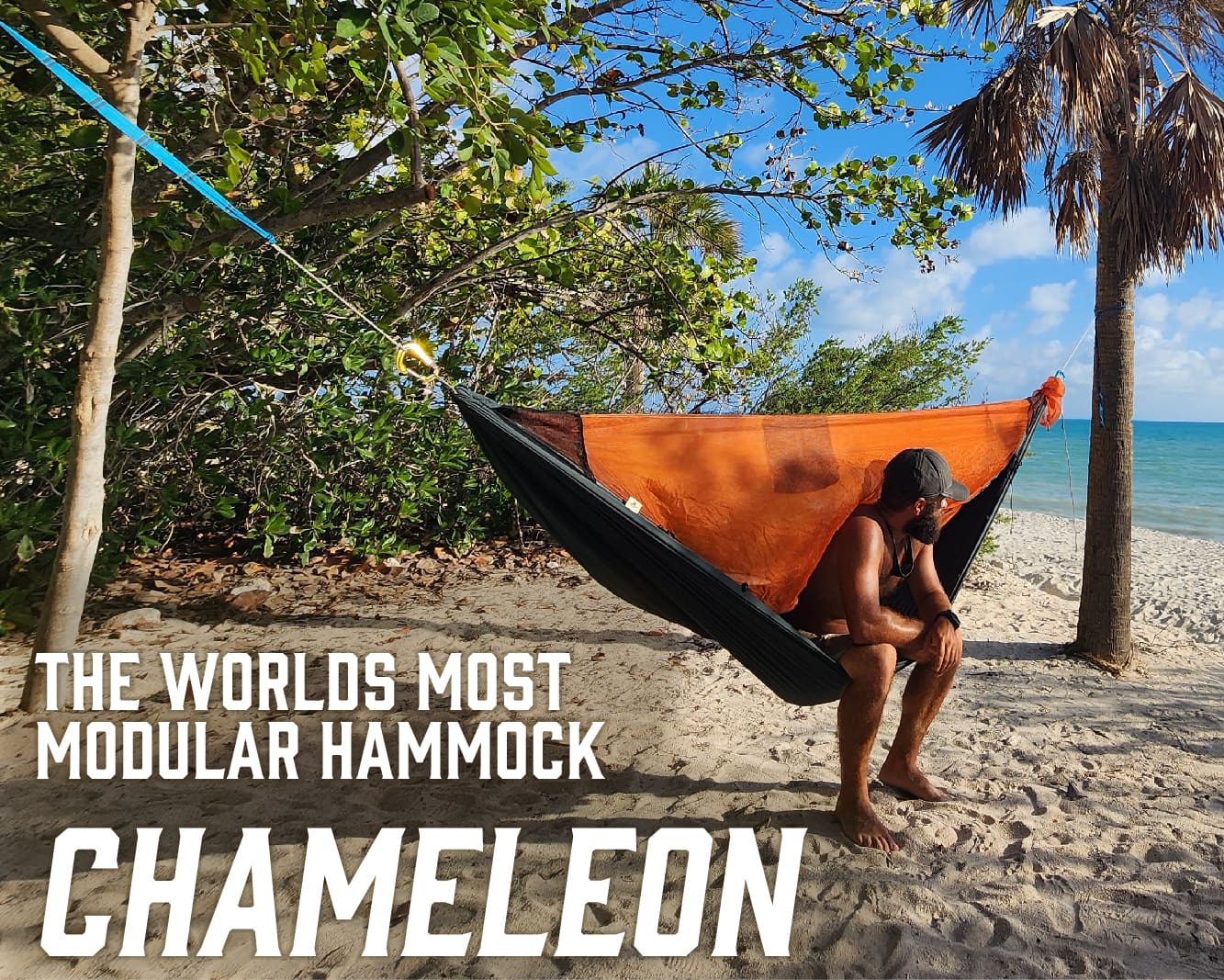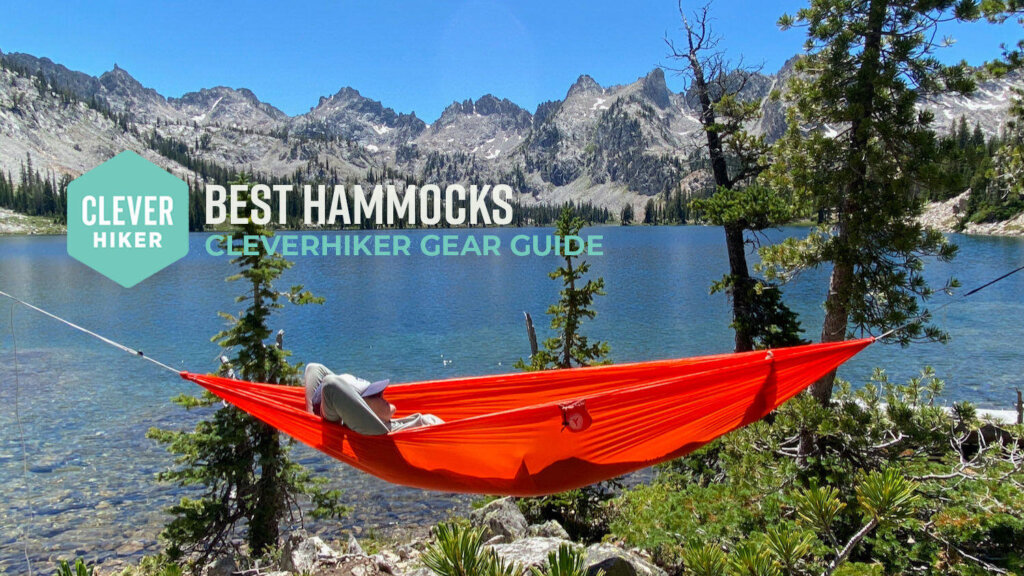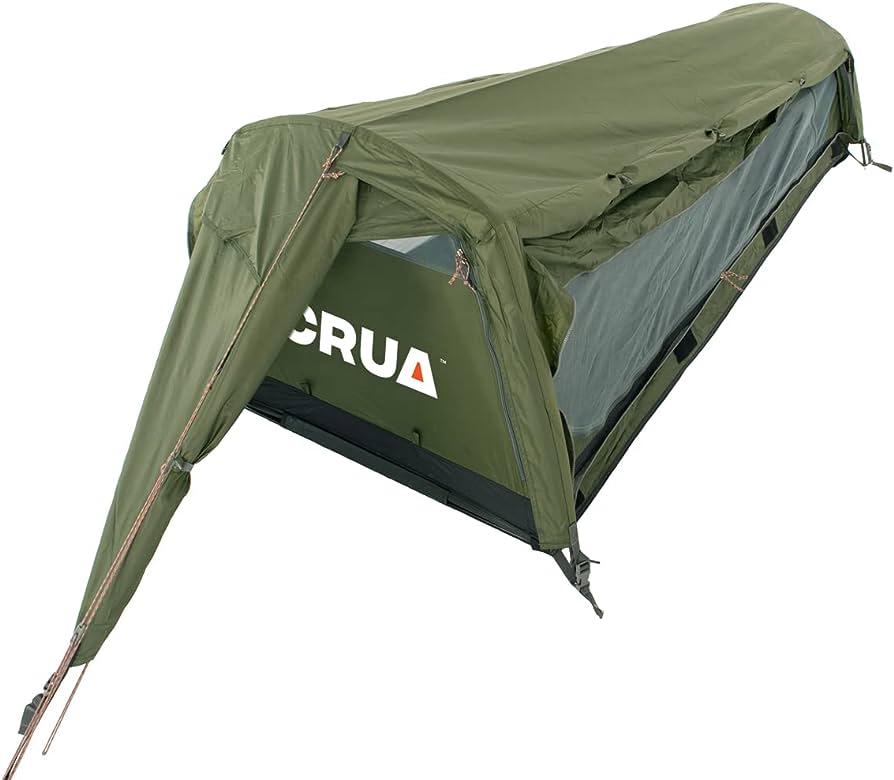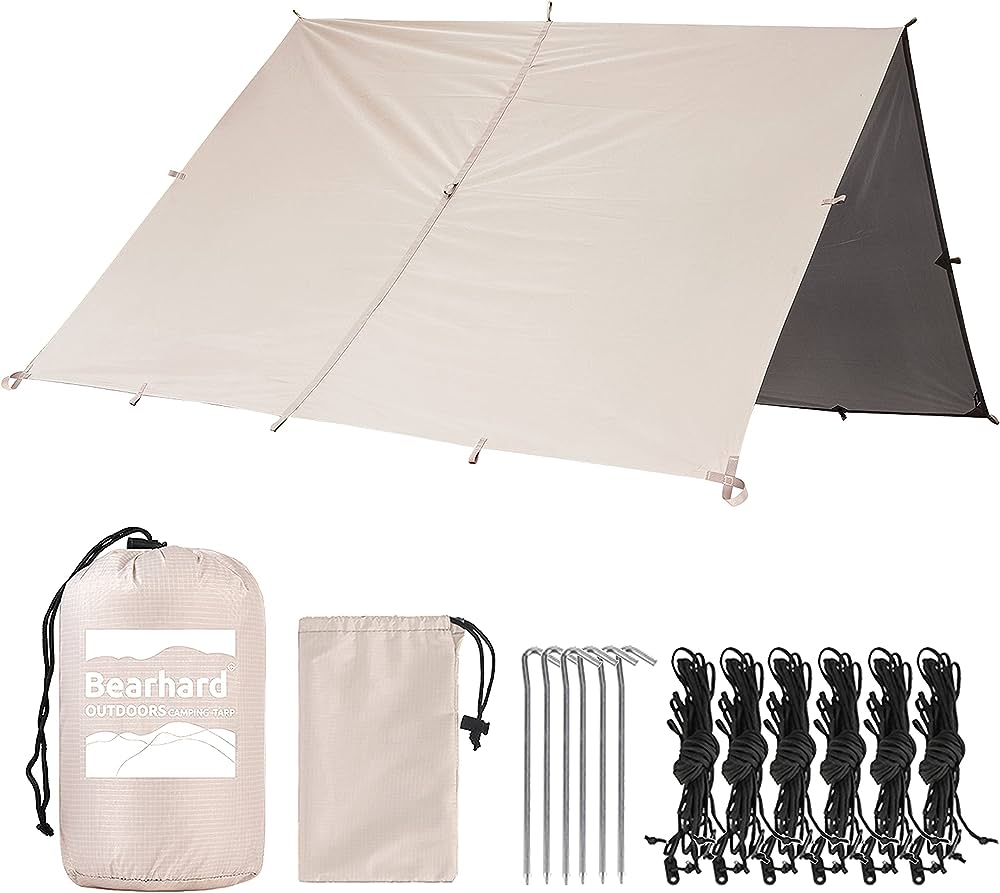- 8 Airplane Footrest Hammock!Travel comfortably - October 9, 2023
- top 7 Pool Float Water Hammock for a Relaxing Summer - October 9, 2023
- top 5 Space SaverSingle Hammock Stand Maximize Comfort and Space - October 9, 2023
Hammock camping in winter requires essential tips and gear to ensure a comfortable and safe experience in cold weather conditions. With proper preparation, insulation, and equipment such as a four-season hammock, underquilt, top quilt, and tarp, winter camping enthusiasts can enjoy the unique benefits of hammock camping even in colder temperatures.
Additionally, adjusting the setup to promote airflow, using a sleeping pad for extra insulation, and wearing appropriate layers of clothing are crucial considerations for staying warm and protected during winter hammock camping trips. Remember to be mindful of potential hazards like ice formation and evaluate the weather forecast before embarking on your winter hammock camping adventure.
Benefits Of Hammock Camping In Winter
Lightweight And Compact Compared To Traditional Camping Gear
Hammock camping in winter offers many benefits, with one of the most valuable being its lightweight and compact nature. When compared to traditional camping gear, such as tents and sleeping pads, hammocks are significantly lighter and more portable. This makes them an ideal choice for backpackers and outdoor enthusiasts who want to minimize the weight they carry while still enjoying a comfortable and restful sleep during their winter camping adventures.
Enhanced Comfort And Sleep Quality
Another significant benefit of hammock camping in winter is the enhanced comfort and sleep quality it provides. Unlike sleeping on the hard and uneven ground, hammocks offer a gentle sway and a cozy cradle-like feeling that can help you relax and drift off into a deep sleep. The ergonomic design of hammocks also helps to relieve pressure points and promote better blood circulation, which can result in less tossing and turning throughout the night. By sleeping in a hammock during winter camping trips, you can wake up feeling refreshed and energized for the day ahead.
Minimal Impact On The Environment
Hammock camping in winter also has a minimal impact on the environment, making it an eco-friendly choice for outdoor enthusiasts. Traditional camping often involves searching for a suitable flat and dry area to set up a tent, which may involve trampling on vegetation or disturbing the natural landscape. In contrast, hammocks can be easily set up between trees, utilizing existing anchor points without causing any damage to the surroundings. This helps to preserve the natural beauty of the camping area and ensures that future generations can also enjoy the pristine wilderness.
Essential Gear For Winter Hammock Camping
Winter camping in a hammock can be an adventurous and refreshing experience, but it requires the right gear to stay warm and comfortable in the chilly outdoor conditions. Whether you’re a seasoned hammock camper or just starting out, having the essential gear for winter camping is crucial for a successful trip. From insulated hammocks to winter-grade suspension systems, here are the must-have items to ensure a cozy and enjoyable winter hammock camping experience.
Insulated Hammock
An insulated hammock is the foundation of a warm and comfortable night’s sleep in winter. These specially designed hammocks come with built-in insulation layers that help to trap body heat and keep you warm throughout the night. Look for hammocks that are made from materials like ripstop nylon or polyester, and have an insulating layer, such as synthetic or down, to ensure maximum warmth.
Underquilt And Top Quilt
To provide additional insulation from the cold air beneath your hammock, an underquilt is a must-have accessory. This quilt-like piece of gear attaches to the underside of your hammock, creating an insulating barrier that prevents heat loss. Pairing it with a top quilt, which is similar to a sleeping bag but designed specifically for hammock use, will further enhance your comfort level and keep you snug during frosty nights.
Winter Sleeping Bag
A quality winter sleeping bag is another essential item to keep you warm and cozy during winter hammock camping trips. Opt for a sleeping bag specifically rated for cold temperatures, preferably with a temperature rating that matches or exceeds the lowest temperature you expect to encounter. Look for bags with features like draft collars, hooded design, and synthetic or down insulation for optimal warmth.
Sleeping Pad
Adding a sleeping pad to your hammock setup helps to provide a layer of insulation and cushioning between you and the cold air below. Look for inflatable or foam sleeping pads that are suitable for winter conditions. The pad should be wide enough to cover your entire back and long enough to support your body from head to toe. This additional layer of insulation will contribute significantly to your overall warmth and comfort while hammock camping in winter.
Tarp Or Rainfly
Protecting yourself and your gear from the elements is crucial in winter hammock camping. A durable tarp or rainfly is essential to shield your hammock setup from rain, snow, and wind. Look for tarps that are made from waterproof or weather-resistant materials, such as ripstop nylon or polyester, and are large enough to cover your entire hammock setup without compromising ventilation.
Guy Lines And Stakes
Guy lines and stakes are essential for securing your tarp or rainfly and maintaining proper tension. These components help prevent your shelter from sagging or collapsing under the weight of snow, ice, or wind. Make sure to choose sturdy and lightweight guy lines and stakes that are durable enough to withstand winter conditions. Adding reflective elements to your guy lines can also help with visibility in low-light conditions.
Winter-grade Suspension System
A reliable suspension system is crucial for setting up your hammock securely and maintaining comfort throughout the night. Look for suspension systems that are specially designed for winter use and can handle the added weight and stresses of cold weather conditions. Quality carabiners, tree straps or straps with adequate insulation, and adjustable suspension length are key features to consider when selecting a suspension system for winter hammock camping.
Campsite Selection Tools
Choosing the right campsite is essential for a successful winter hammock camping trip. Carry tools like a compass, map, and weather forecast to help you find a suitable site and anticipate potential hazards. Look for sheltered areas, away from strong winds and potential falling objects. Ensure there are sturdy trees available to hang your hammock from, with enough distance between them to provide optimal setup stability. Take your time to carefully evaluate the terrain and select a safe and comfortable spot to enhance your overall camping experience.
Tips For Setting Up A Winter Hammock Campsite
Setting up a winter hammock campsite requires careful planning and attention to detail. From choosing the right location and elevation to insulating the hammock for warmth, there are essential tips and gear considerations that can make your winter hammock camping experience safe and comfortable. In this article, we will explore tips for setting up a winter hammock campsite to ensure you have a cozy and enjoyable outdoor adventure.
Choosing The Right Location And Elevation
When it comes to winter hammock camping, selecting the right location and elevation is crucial for a successful and restful night’s sleep. Look for areas that offer natural windbreaks, such as dense forests or valley bottoms. These spots can provide some protection from strong winds and help maintain a more comfortable temperature inside your hammock.
In addition to choosing a wind-protected spot, consider the elevation. Higher elevations tend to be colder, so if you’re expecting freezing temperatures, opt for a lower elevation where the temperatures may be slightly warmer.
Tensioning The Hammock Correctly
Tensioning your hammock correctly is vital for a comfortable night’s sleep and ensuring the hammock stays securely in place. Begin by adjusting the suspension straps to provide a slight sag in the hammock when you’re inside it. This allows for better weight distribution and reduces strain on the hammock and suspension system.
Make sure the hammock is hung at the right height. It should be low enough to comfortably get in and out but high enough to prevent it from dragging on the ground. Test the tension by sitting in the hammock and adjusting as needed.
Setting Up The Tarp For Wind And Snow Protection
A tarp is an essential piece of gear for winter hammock camping. It provides protection from wind, snow, and other elements. Properly setting up the tarp is crucial to maximize its effectiveness. Begin by suspending the tarp above the hammock, ensuring it extends beyond the hammock’s ends and sides.
Use trekking poles or trees to create a peak in the tarp, allowing snow and rain to slide off easily. Stake down the corners and sides of the tarp tightly to prevent it from flapping in strong winds. This will provide you with a cozy and dry shelter throughout the night.
Anchoring And Securing The Hammock And Tarp
Properly anchoring and securing your hammock and tarp will give you peace of mind during winter hammock camping. Ensure your hammock’s suspension straps are securely attached to sturdy anchor points. Avoid using dead trees or weak branches that may break under the weight.
Similarly, secure the tarp using reliable stakes and guylines. Consider using adjustable tensions systems to easily tighten or loosen the guylines based on weather conditions. This will keep your hammock and tarp secure and stable, even in gusty winds or heavy snowfall.
Insulating The Hammock For Warmth
Insulating the hammock is essential to stay warm during chilly winter nights. Use an insulation system that includes an underquilt and top quilt or a sleeping pad. An underquilt provides insulation from below, while a top quilt or sleeping pad offers additional warmth from above.
Ensure that the underquilt fits snugly against the bottom of the hammock to prevent drafts. The top quilt or sleeping pad should be positioned between you and the hammock to add insulation. These layers of insulation will help retain body heat and keep you comfortable throughout the night.
Creating A Cozy Sleeping Environment
Creating a cozy sleeping environment in your hammock during winter camping goes beyond insulation. Additional steps can enhance your comfort and warmth. Consider using a hot water bottle or hand warmers to preheat your sleeping bag before crawling in. These small additions can make a significant difference in keeping you cozy throughout the night.
For extra comfort, bring a soft wool blanket or an additional layer to place on top of your sleeping bag. This will provide an added barrier against the cold and create a snug sleeping environment.
With these essential tips for setting up a winter hammock campsite, you can embark on a memorable outdoor adventure while staying warm and comfortable. Remember to plan ahead, check weather conditions, and always prioritize safety when venturing into the wintry wilderness.

Credit: dutchwaregear.com
Staying Warm And Comfortable In A Winter Hammock
When it comes to winter hammock camping, staying warm and comfortable is the key to a successful outdoor adventure. The cold temperatures can be challenging, but with the right strategies and gear, you can enjoy a cozy night’s sleep in your hammock. In this article, we will explore some essential tips and gear to help you stay warm and comfortable during your winter hammock camping experience.
Layering Your Clothing For Optimal Warmth
Layering your clothing is crucial for retaining body heat and staying warm in cold weather. When preparing for a winter hammock camping trip, it’s essential to dress in multiple layers. Each layer serves a specific purpose, including insulation, moisture-wicking, and protection against the elements.
Here is a breakdown of the layers you should consider:
- Base Layer: This layer should be made of moisture-wicking material, such as merino wool or synthetic fibers, to keep your body dry and prevent sweat from cooling you down.
- Insulating Layer: The insulating layer traps warm air against your body. Fleece or down jackets are excellent choices for this layer.
- Outer Layer: The outer layer acts as a shield against wind, rain, and snow. Look for a waterproof and windproof jacket that provides ample protection.
Using A Hot Water Bottle Or Hand Warmers
To add extra warmth to your winter hammock setup, consider using a hot water bottle or hand warmers. These can be placed inside your hammock or at the foot-end to provide localized heat. Make sure to secure the hot water bottle properly to avoid any spills or leaking.
Insulating The Ground Beneath The Hammock
When sleeping in a hammock during winter, it’s important to insulate the ground beneath you. This layer of insulation will prevent the cold from seeping through the bottom of the hammock and stealing away your warmth. You can use various materials for insulation, including foam sleeping pads or reflective emergency blankets.
Dressing In Moisture-wicking And Insulated Sleepwear
The type of sleepwear you choose can make a significant difference in your comfort level while hammock camping in winter. Opt for moisture-wicking base layers that help regulate your body temperature and keep moisture away from your skin. Additionally, wear insulated sleepwear, such as thermal pants and long-sleeve tops, to provide an extra layer of warmth throughout the night.
Avoiding Condensation Inside The Hammock
Condensation can be a common issue when hammock camping in winter. To reduce condensation buildup inside your hammock and prevent your sleeping gear from becoming damp, make sure to properly vent your setup. Leave a small gap at the foot-end of your hammock to allow air circulation. This will help minimize condensation and keep you dry throughout the night.
Properly Ventilating The Hammock For Breathability
Proper ventilation is essential for breathability inside the hammock. Make sure your hammock has mesh panels or a breathable fabric that allows air to flow freely. This will prevent excessive moisture buildup and perspiration, keeping you comfortable and dry while you sleep.
Safety Considerations For Winter Hammock Camping
When it comes to winter camping, hammock camping can be an exciting and adventurous way to experience the great outdoors. However, it is crucial to prioritize safety and ensure that you are well-prepared for the unique challenges that winter camping presents. In this article, we will discuss some essential safety considerations for winter hammock camping, including checking weather conditions and forecasts, packing emergency supplies and a first aid kit, understanding and assessing the risks of cold weather camping, practicing proper fire safety and campfire management, and knowing how to respond to hypothermia and frostbite symptoms. Let’s dive in!
Checking Weather Conditions And Forecasts
Before embarking on your winter hammock camping trip, it is vital to check the weather conditions and forecast for your chosen location. Winter weather can be unpredictable, and being aware of any potential storms, low temperatures, or strong winds can help you make informed decisions. Ensure that you have access to reliable weather updates throughout your trip, as conditions can change rapidly.
Packing Emergency Supplies And A First Aid Kit
When camping in winter, it is essential to be prepared for emergencies. Pack an emergency kit with items such as extra warm clothing, a stove or fuel for cooking, a map and compass, a headlamp, a knife, a whistle, and extra food and water. Additionally, bring a well-stocked first aid kit that includes supplies for treating common winter-related injuries like frostbite and hypothermia. Having these supplies readily available can make a significant difference in the event of an emergency.
Understanding And Assessing The Risks Of Cold Weather Camping
Cold weather camping presents unique risks that must be understood and carefully assessed. Some of these risks may include frostbite, hypothermia, slippery terrain, falling tree branches, and reduced visibility. Be aware of these potential hazards and take appropriate precautions to minimize the risks. Make sure you are familiar with the signs and symptoms of cold-related injuries and know how to respond promptly and effectively.
Practicing Proper Fire Safety And Campfire Management
Building a fire can provide warmth and comfort during winter camping, but it is essential to practice proper fire safety and campfire management. Ensure your fire is a safe distance from your hammock and any surrounding trees or vegetation. Use a fire ring or designated fire pit whenever possible, and never leave your fire unattended. Extinguish the fire completely before leaving your campsite or going to sleep. By following these precautions, you can enjoy the benefits of a campfire while minimizing the risk of accidents or wildfires.
Knowing How To Respond To Hypothermia And Frostbite Symptoms
In cold weather, the risk of hypothermia and frostbite increases. It is crucial to know how to identify the symptoms of these conditions and respond appropriately. Symptoms of hypothermia may include shivering, confusion, drowsiness, slurred speech, and loss of coordination. If these symptoms occur, take immediate action to warm the affected person and seek medical help if necessary. Frostbite is characterized by numbness, pale or waxy skin, and blisters. Move to a warm environment, remove any wet clothing, and seek medical assistance if needed. Understanding these symptoms and knowing what to do can help prevent further harm and ensure everyone’s safety.
Frequently Asked Questions On Hammock Camping In Winter: Essential Tips And Gear
Q: Can You Hammock Camp In Winter?
A: Yes, hammock camping in winter is possible with the right gear and preparation.
Q: What Are The Essential Tips For Hammock Camping In Winter?
A: To effectively camp in winter, use an underquilt, insulation pad, appropriate clothing, and a tarp for added protection from the elements.
Q: How Can I Stay Warm While Hammock Camping In Winter?
A: Layering clothing, using a four-season sleeping bag, adding additional insulation under your hammock, and using hand warmers can help you stay warm during winter camping.
Q: Is A Hammock Or A Tent Better For Winter Camping?
A: Both options have their advantages, but hammocks provide better insulation by keeping you off the ground and away from cold surfaces.
Q: Do I Need Special Gear For Hammock Camping In Winter?
A: Yes, you will need a hammock with an underquilt, a four-season sleeping bag, an insulation pad, and a tarp for adequate protection from the cold.
Q: Are There Any Safety Considerations When Hammock Camping In Winter?
A: It’s important to check the weather forecast, ensure proper insulation, stay hydrated, and have a backup plan in case of emergencies during winter hammock camping.
Conclusion
In a nutshell, hammock camping in winter can be an exhilarating experience if you’re well-prepared. By following these essential tips and investing in the right gear, you can enjoy the beauty of nature without compromising on comfort and safety. From selecting the right hammock and insulation to layering up and staying hydrated, it’s crucial to plan ahead and be mindful of the weather conditions.
So, gear up and embark on your winter hammock camping adventure with confidence!




